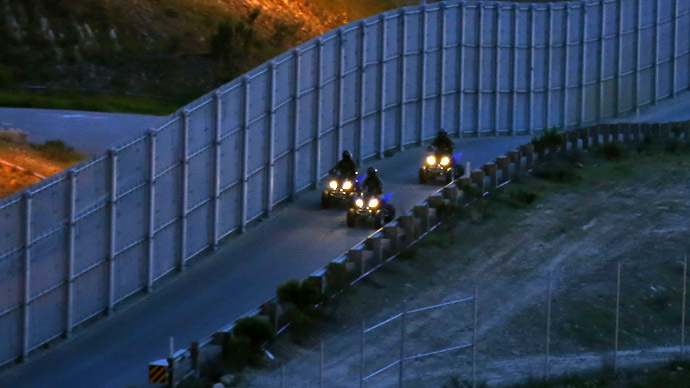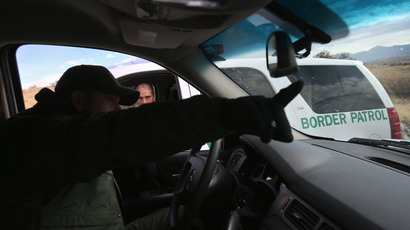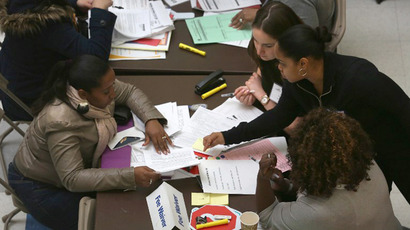Lockdown USA: Congress plans 700-mile ‘surge’ on Mexico border

If Congressional Republicans get their way, the 2,000-mile (3,200-km) border separating the US and Mexico will be equipped observation towers, surveillance drones and one guard every 1,000 feet (300 meters).
The proposal comes as a compromise initiative by the US Senate in
an effort to pass a immigration reform bill. The legislation
would see the Obama administration create a path to citizenship
for some 11 million undocumented immigrants, while at the same
time ease Republican fears of another mass-cross-border migration
from Mexico.
The security plan, created by Republican Senators Bob Corker of
Tennessee and John Hoeven of North Dakota, would station another
20,000 Border Patrol agents along the southern border, in
addition to the 18,500 already there. The bill would also expand
fencing and install a visa entry and exit system at seaports and
international airports, among other costly features.
“It would be very difficult to create a stronger border
security bill,” Dallas News quoted Corker as saying. “I
don’t know what else could be done in this nation to secure the
border if these inputs, once implemented, don’t work.”
However, the Republican plan for a ‘surge’ along the US-Mexico
border – complete with a dazzling array of sophisticated
gadgetry, including night-vision goggles, unmanned aerial
vehicles and radar – has liberal groups worried that the US
border will become a militarized zone.
These fears are heightened by the fact that border crossing
interceptions have dropped significantly since 1999, when
approximately 1.5 million migrants were apprehended attempting to
cross into the US through Mexico, according to the Department of
Homeland Security. Today, fewer than 250,000 immigrants
attempting to cross illegally into the United States are stopped
annually.
Statistics suggest that the struggling US economy is one reason
why fewer Mexicans, among other nationalities, are attempting to
illegally cross into the US for work. In the past two years,
Mexico’s economy has grown at a healthy 3.9 percent annually,
which has helped the Central American nation create jobs.

A newly released report
from the Congressional Budget Office (CBO) forecasts that the
immigration bill would actually reduce the federal budget deficit
by $197 billion over the next decade, and $700 billion over the
decade after that. The legislation would assimilate both skilled
and unskilled workers from abroad, boosting American output and
productivity.
The CBO predicts the US economy will be 5.4 percent larger in
2033 if the legislation is passed, and that average salaries
would also be slightly higher.
Nevertheless, Republicans – mindful of the multitudes that
streamed across the border after Ronald Reagan’s amnesty program
in 1986 – have said they would not support Obama’s immigration
bill unless it contained “concrete measures” to prevent
foreigners from illegally entering the US from Mexico.
According to the Migration Policy Institute, maintaining security
along the US-Mexico border already costs $18 billion a year –
more than all other federal law enforcement agencies combined.
Enhancing security along the Mexican border will cost an
additional $30 billion, which may prove a bitter bill to swallow
as Washington enacts austerity measures in its effort to trim
spending.
John McCain (R-AZ), a co-author of the legislation, claims that
this enhanced technology will allow the US Border Patrol to
identify locations where undocumented migrants are attempting to
cross. The 2008 Republican presidential candidate also wants to
force all US companies to check the legal status of their
workforce.
Some 40 percent of America’s immigrants have overstayed their
visas, rather than entered the country illegally, the senator
added.
Although America’s 2,000-mile border with Mexico is more secure
than ever, it looks as if it will become even stronger at a time
of severe strain on the US budget. The stage is set for ongoing
debates between Democrats and Republicans over the limits
of imposing security along its southern border, as well as what
to do with the millions whose future in the United States remains
uncertain.














